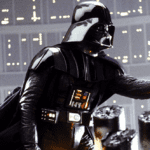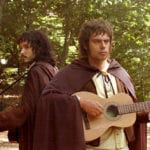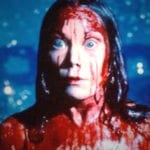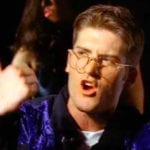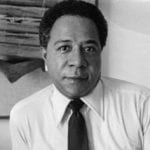 Mysteries
Mysteries  Mysteries
Mysteries  History
History 10 Surprising Stories About the Texas Rangers
 Humans
Humans 10 Philosophers Who Were Driven Mad by Their Own Theories
 Miscellaneous
Miscellaneous 10 Video-Game-Worthy Weapons and Armors from History
 Weird Stuff
Weird Stuff 10 Psychics Who Accurately Predicted Wartime Events
 The Arts
The Arts 10 Pieces of Art Inspired by a Broken Heart
 Health
Health 10 Science Fiction-Sounding New Medical Treatments
 History
History 10 Surprising Facts About the Father of Submarine Warfare
 Space
Space Ten Astonishing New Insights into Alien Worlds
 Weird Stuff
Weird Stuff 10 Bizarre Summer Solstice Rituals Still Practiced Today
 Mysteries
Mysteries Top 10 Haunting Facts About the Ghost Ship MV Alta
 History
History 10 Surprising Stories About the Texas Rangers
 Humans
Humans 10 Philosophers Who Were Driven Mad by Their Own Theories
Who's Behind Listverse?

Jamie Frater
Head Editor
Jamie founded Listverse due to an insatiable desire to share fascinating, obscure, and bizarre facts. He has been a guest speaker on numerous national radio and television stations and is a five time published author.
More About Us Miscellaneous
Miscellaneous 10 Video-Game-Worthy Weapons and Armors from History
 Weird Stuff
Weird Stuff 10 Psychics Who Accurately Predicted Wartime Events
 The Arts
The Arts 10 Pieces of Art Inspired by a Broken Heart
 Health
Health 10 Science Fiction-Sounding New Medical Treatments
 History
History 10 Surprising Facts About the Father of Submarine Warfare
 Space
Space Ten Astonishing New Insights into Alien Worlds
 Weird Stuff
Weird Stuff 10 Bizarre Summer Solstice Rituals Still Practiced Today
Top 10 Greatest Cinematographers
Cinematography is, in many ways, a thankless job. Everyone knows what their basic purpose is, how important it is to the film, and how visual images are often the most memorable, and yet many would struggle to name even one cinematographer. In the history of film, the role of the cinematographer is an often neglected one, and yet they have been as important and influential as directors, writers and actors. To commemorate them, here is a list of the ten greatest and most influential cinematographers. You may also like our Top 10 Cinematographic Masterpieces.
Miyagawa is arguably the most important cinematographer in Japanese history, having worked with a who’s who of Japanese auteurs, including Akira Kurosawa, Yasujiro Ozu, and Kenji Mizoguchi. He is perhaps most famous for his work on Rashomon, where he was the first person to point a camera directly into sunlight (utilising years of study on light exposure). He was also known for using multiple camera setups for scenes, and acclaimed for his contrast of sweeping tracking shots and sharp close-ups. Other innovations on the film include using mirrors to reflect natural light and using dyed black water as rain, to make it appear more vivid on camera. He was also a master of genres, working on comedies (The Rickshaw Man), samurai films (the Zatoichi films), as wells as overseeing 164 cameramen and using over 234 different lenses for Tokyo Olympiad, often compared with Leni Riefenstahl’s Olympia as one of the greatest Olympics documentaries.
Some of Miyagawa’s stunning work on Rashomon can be seen in the clip.
Notable films: Rashomon (1950), Ugetsu (1953), Sansho the Bailiff (1954), Floating Weeds (1959), Yojimbo (1961), Zatoichi (1964), Tokyo Olympiad (1965)
Though nowhere near as prolific as others on this list, Urusevsky has earned an almost mythic status among cinematographers due to his work with Russian director Mikhail Kalatozov on such films as I am Cuba and The Cranes are Flying. His nearly unbelievable combination of deep focus, acrobatic tracking shots, subjective perspective and other remarkable cinematographic trickery was so ahead of its time that it wouldn’t be seen in the west until over a decade later. Unfortunately, his Kaltozov collaborations were largely buried by the Soviet propaganda machine, and have only recently been restored thanks to acknowledged admirers such as Martin Scorsese and Francis Ford Coppola. His spectacular camerawork, which often distracted from the proper focus of the scene, was defended by Urusevsky, remarking that, “It has never interested me, as cameraman, to just register what is going on in front of the camera.””
The above, much celebrated, clip is perhaps the most famous scene in Urusevsky’s repertoire, a balletic tracking shot from the opening of I am Cuba shows off his blistering and original camerawork.
Notable films: The Forty-First (1956), The Cranes are Flying (1957), The Unsent Letter (1959), I am Cuba (1964)
Vittorio Storaro (born 24 June 1940 in Rome) is a three-time Academy Award winning Italian cinematographer. He is most famous for his work on Apocalypse Now (his first Oscar), where he was given free reign by Francis Ford Coppola to photograph the film’s acclaimed visual look. He went on to win Oscars for Reds and The Last Emperor, which was directed by Bernardo Bertolucci, his most frequent collaborator. Storaro is widely regarded as a master cinematographer with a sophisticated philosophy largely inspired by Johann Wolfgang von Goethe’s theory of colors, which focuses in part on the psychological effects different colors have and the way in which colors influence our perceptions of different situations. With his son, Fabrizio Storaro, he created the Univisium format system to unify all future theatrical and television movies into one respective aspect ratio of 2.00:1.
The clip is a scene from The Sheltering Sky, showcasing arguably the most beautiful desert cinematography ever put on film. For a much better quality view (and longer version) of this scene, go here. You will absolutely not be disappointed.
Notable films: The Conformist (1970), Last Tango in Paris (1972), Apocalypse Now (1979), Reds (1981), The Last Emperor (1987), The Sheltering Sky (1990)
As Ingmar Bergman’s choice cinematographer, Nykvist was given the unenviable task of transforming the Swedish auteur’s startling, often surreal, images into reality in front of the camera. Despite this, Nykvist was noted for his subtlety and simplicity, favouring naturalistic lighting to complement Bergman’s slow, paced style of storytelling. He was unpretentious and often hidden behind his towering director, but Nykvist was still acknowledged for his work with two Academy Awards for Cries and Whispers and Fanny and Alexander. Nykvist also worked with directors such as Roman Polanski, Woody Allen and Andrei Tarkovsky. He was the first European cinematographer to join the American Society of Cinematographers, and received a Lifetime Achievement Award from the ASC in 1996.
Above is a beautiful scene from Persona. Notice the remarkable fading of light.
Notable films: The Virgin Spring (1960), Persona (1966), Cries and Whispers (1973), Fanny and Alexander (1982), The Sacrifice (1986), The Unbearable Lightness of Being (1988)
Gregg Toland was not with us long, but it is a credit to his brilliance that he is so revered today. Toland was nominated five times for the Best Cinematography Oscar during a seven year golden period which lasted from 1936 to 1942, but it is his collaboration with Orson Welles on Citizen Kane that is most remembered. Though he didn’t create deep focus cinematography, he perfected it in Citizen Kane, allowing characters in the fore and background to be shot in focus at the same time. In fact, much of the film’s visual and cinematographic genius – low angles, high contrast, dark shadows – though often credited to Welles, was largely Toland’s doing. Welles later acknowledged that Toland was advising him on camera placement and lighting effects secretly so the young director would not be embarrassed in front of the highly experienced crew. So indebted was he to Toland’s work, that Welles insisted that their names appear together on the end credits. Later on, Toland worked on Disney’s Song of the South, which combined live action with animation.
Above is an example of deep focus in Citizen Kane.
Notable films: Wuthering Heights (1939), The Grapes of Wrath (1940), The Long Voyage Home (1940), Citizen Kane (1941), How Green Was My Valley (1941), Song of the South (1946)
Nicknamed ‘The Prince of Darkness’ for his penchant for using rich blacks and dark interiors, most famously in The Godfather films for which he is best known, Gordon Willis is famed for his innovative cinematography which has garnered him two Oscar nominations and heaps of respect. His work on The Godfather films is legendary, and his innovations include pioneering the use of warm, fuzzy, amber glows to represent nostalgic scenes of the past in The Godfather Part II, and the unique recreation of 1920s photography for Woody Allen’s Zelig.
Above is a clip showing Gordon Willis (and others) discussing the cinematography of The Godfather.
Notable films: The Godfather (1972), The Godfather Part II (1974), All the President’s Men (1976), Zelig (1977), Manhattan (1979), Zelig (1983), The Godfather Part III (1990)
Though born in Australia, Doyle made his mark by photographing Asian films, especially the work of Hong Kong director Wong Kar-Wai. His work with the director, particularly the films Chungking Express, In the Mood for Love and 2046, is lauded for their vivid splashes of colors and high saturation, and he is considered one of the most important architects of Asian New Wave cinema. He is also one of the few “superstar” cinematographers, whose reputation is often higher than the directors he works with.
Above is a clip from the film Hero, where Doyle’s attention to vivid colors was crucial to the story.
Notable films: Chungking Express (1994), In the Mood for Love (2000), The Quiet American (2002), Hero (2002), Infernal Affairs (2002), 2046 (2002), Paranoid Park (2007)
Beginning with films such as Cool Hand Luke and Butch Cassidy and the Sundance Kid, Hall helped liberate approaches to filming by making, as Sight and Sound puts it, “making virtues of mistakes”. Blemishes such as the sun hitting the lens, dirt getting on the lens, or other seeming distractions which would have necessitated reshoots in the past, but Hall’s approach exemplified the new wave of American cinema and helped set a template for gritty, independent films. But Hall also proved he could handle more ‘pristine’ pictures, photographing films such American Beauty later in his career. He won his first Oscar in 1969 for Butch Cassidy and the Sundance Kid, and then would have to wait 30 years for his next, for American Beauty. His third Oscar was awarded to him posthumously for Road to Perdition. As well as that, he was nominated a further seven times during his life.
Above is a funny scene from Butch Cassidy and the Sundance Kid, for which Hall won an Oscar.
Notable films: Cool Hand Luke (1967), In Cold Blood (1967), Butch Cassidy and the Sundance Kid (1969), The Day of the Locust (1975), American Beauty (1999), Road to Perdition (2002)
James Wong Howe had over 130 films to his credit, spanning from the silent era to color. During the 1930s and 1940s he was considered one of the most sought after cinematographers in Hollywood. He was nominated for ten Academy Awards for cinematography, winning twice. As well as being one of the first cinematographers to use deep focus photography, Howe pioneered techniques to augment eyes on B&W film, early dolly techniques, handheld camera techniques and shooting by unusual light sources, such as by candlelight on The Molly Maguires.
The clip is some crisp, beautiful black and white photography from Hud, for which Howe won an Oscar.
Notable films: The Thin Man (1934), Algiers (1938), Yankee Doodle Dandy (1942), The Rose Tattoo (1955), Sweet Smell of Success (1957), The Old Man and the Sea (1958), Hud (1963), Funny Lady (1975)
Charles Rosher was a two-time Academy Award-winning cinematographer who worked from the early days of silent films through the 1950s. Born in London, he was the first cinematographer to receive an Academy Award, along with 1929 co-winner Karl Struss. Rosher studied photography in his youth but earned a reputation early as a newsreel cameraman, before moving to the United States in 1909. He subsequently found work for David Horsley working in his production company in New Jersey. Because early film was largely restricted to using daylight, Horsley relocated his production company to Hollywood in 1911, taking Rosher with him, and opened the first movie studio there. This made Rosher the first full-time cameraman in Hollywood. In 1913 he went to Mexico to film newsreel footage of Pancho Villa’s rebellion. In 1918, he was one of the founders of the American Society of Cinematographers and served as the group’s first Vice-President. In the 1920s he was one of the most sought-after cinematographers in Hollywood, and a personal favorite of stars such as Mary Pickford. His work with Karl Struss on F.W. Murnau’s 1927 film Sunrise is viewed as a milestone in cinematography. In addition, Rosher also received two Eastman Medals (named for George Eastman), Photoplay magazine’s Gold Medal, and the only fellowship ever awarded by the Society of Motion Picture Engineers.
Above is an example of Rosher’s revolutionary work on Sunrise.
Notable films: Sunrise (1927), The Affairs of Cellini (1934), Little Lord Fauntleroy (1936), The Yearling (1946), Annie Get Your Gun (1950), Show Boat (1951)
